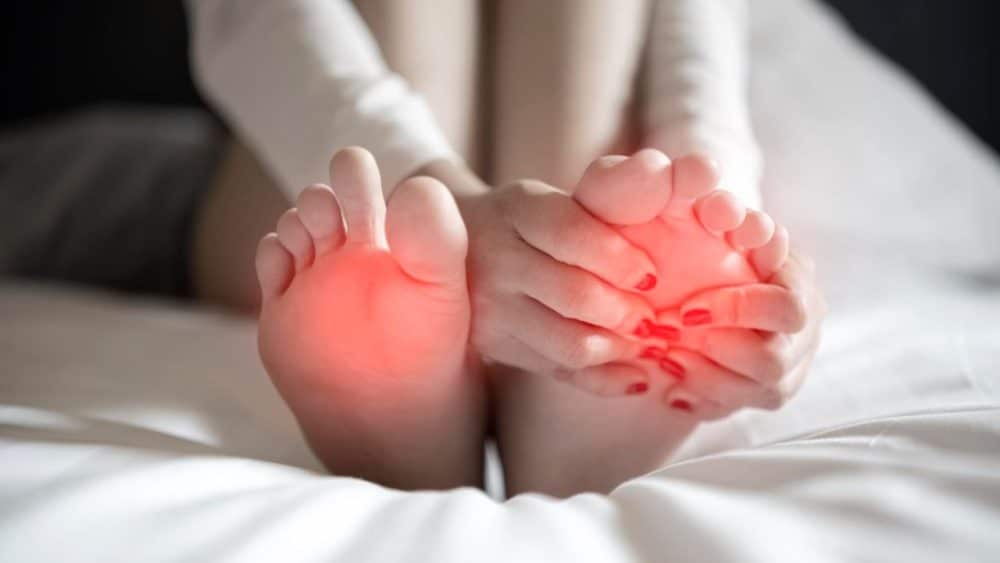Arthritis is a term that encompasses a group of over 100 different types of joint disorders characterised by inflammation in one or more joints. While the exact cause can vary depending on the type of arthritis, there are several common factors that contribute to its development. Let’s delve deeper into understanding the primary causes of arthritis.
Family History and Genetics
The role of family history and genetics in the development of arthritis must be considered. While the exact mechanisms are still being researched, it’s clear that genetics play a significant role in determining one’s susceptibility to this condition.
1. The Genetic Link
- Specific Genes: Researchers have identified specific genes associated with a higher risk of certain types of arthritis. For instance, the HLA (human leukocyte antigen) gene complex is known to be linked to rheumatoid arthritis, ankylosing spondylitis, juvenile arthritis, and a few other autoimmune diseases. Carrying these genes can increase one’s risk, but it’s essential to note that not everyone with these genes will develop arthritis.
- Gene Combinations: It’s not just individual genes but combinations of genes that can increase the risk. Some genes work in tandem, making individuals more susceptible to environmental factors that can trigger arthritis.
- Genetic Mutations: Over time, mutations can occur in our DNA due to environmental factors or random errors in DNA replication. Some of these mutations might increase the risk of developing arthritis.
2. Family History as an Indicator
- Patterns of Inheritance: While arthritis isn’t inherited directly like other genetic conditions, patterns can emerge within families. If multiple family members across generations have had arthritis, it might indicate a stronger genetic predisposition.
- Shared Environment: It’s also worth noting that families often share environments and lifestyles. While genetics play a role, shared environmental factors, like diet, exposure to certain elements, or even occupation, can also contribute to the onset of arthritis in multiple family members.
- Early Detection and Management: Knowing one’s family history can be beneficial for early detection and management. If you’re aware that many of your family members have had arthritis, you can be more proactive in seeking medical advice, undergoing screenings, or taking preventive measures.
3. The Interplay of Genetics and Environment
While genetics can predispose an individual to arthritis, environmental triggers often play a crucial role. For instance, a person might carry the genes that increase the risk of rheumatoid arthritis but might only develop the condition after a specific environmental trigger, such as an infection or prolonged exposure to certain materials.
Repetitive Stress on Joints
The human body is an intricate machine, with joints as the pivotal points for movement and flexibility. However, just like any machine, overuse or misuse can lead to wear and tear. Repetitive stress on joints is one such factor that can accelerate this wear and tear, leading to conditions like arthritis. Let’s delve deeper into how and why repetitive stress affects our joints.
1. What is Repetitive Stress?
Repetitive stress refers to the continuous strain or load on a particular joint or set of joints due to repeated motions or sustained positions. This can result from daily activities, specific job tasks, hobbies, and sports.
2. Mechanism of Damage
Each time a joint is used, a certain amount of stress is placed on it. When the same motion is repeated frequently, without giving the joint adequate time to recover, it can lead to micro-injuries. Over time, these micro-injuries can accumulate, leading to inflammation and, eventually, more severe joint damage.
3. Common Sources of Repetitive Stress
1. Occupational Hazards
Jobs that require repeated motions, like typing, assembly line work, or even certain musical performances, can put workers at risk. For instance, a pianist or a typist might experience repetitive stress in their fingers and wrists.
2. Sports and Physical Activities
Athletes, especially those in sports that emphasise specific motions like tennis, baseball, or golf, often place repetitive stress on particular joints. Repeated swinging, throwing, or hitting can lead to conditions like tennis elbow or golfer’s knee.
3. Daily Activities
Even everyday activities, if done excessively, can lead to repetitive stress. For example, constantly using a smartphone can lead to ‘texting thumb’, a form of repetitive stress injury.
4. Prevention and Management
1. Ergonomics
Adapting your workspace to be more joint-friendly can significantly reduce the risk. This includes having an ergonomic keyboard, ensuring your chair and desk are at the right height, or using tools designed to reduce joint strain.
2. Regular Breaks
Regular breaks during any repetitive motion activity can give your joints much-needed rest and recovery time.
3. Physical Therapy
Engaging in physical therapy can help strengthen the muscles around the joints, providing better support and reducing the risk of injury.
4. Proper Technique
Whether sports, music, or any other activity, ensuring you use the correct technique can reduce unnecessary joint stress.
Autoimmune Diseases
Autoimmune diseases play a significant role in the development of certain types of arthritis. In autoimmune conditions, the body’s immune system mistakenly attacks its tissues, viewing them as foreign invaders. This misdirected immune response can target various parts of the body, including the joints.
Rheumatoid arthritis, for instance, is a classic example of an autoimmune form of arthritis. In this condition, the immune system primarily targets the synovium, the soft tissue lining the joints. This lining produces a fluid that nourishes the cartilage and lubricates the joints, ensuring smooth movement. When the synovium is attacked, it can lead to inflammation and swelling, causing pain and potential damage to the joints.
Over time, the cartilage and bone within the joint can be damaged, leading to long-term complications and reduced joint function. It’s not entirely clear why the immune system starts attacking the joints in people with autoimmune diseases. However, genetic, environmental, and hormonal factors are believed to play a role.
Understanding the autoimmune nature of certain arthritic conditions is crucial for treatment, as many therapeutic approaches focus on modulating or suppressing the immune response to protect the joints from further damage.
Viral and Bacterial Infections
Viral and bacterial infections can significantly contribute to the onset of certain types of arthritis. When harmful viruses or bacteria invade the body, the immune system fights to combat these foreign agents.
However, in some cases, after the initial infection has been cleared, the immune system can remain hyperactive, mistakenly targeting the body’s tissues, including the joints. This phenomenon can lead to post-infectious arthritis, where joint inflammation persists after the causative infection resolves.
One well-known example of this is Lyme disease, which is caused by the bacterium Borrelia burgdorferi and transmitted to humans through the bite of infected ticks. If not treated promptly, Lyme disease can lead to chronic joint inflammation, mimicking the symptoms of other forms of arthritis. Similarly, viruses like the chikungunya virus, parvovirus B19, and even some strains of the common cold or influenza can lead to joint pain and inflammation in susceptible individuals.
It’s also worth noting that some bacteria and viruses can directly invade joint tissues, causing septic arthritis. This form of arthritis is a medical emergency, as it can rapidly damage the joint if not treated immediately.
The connection between infections and arthritis underscores the importance of timely diagnosis and treatment of infectious diseases. It also highlights the need for preventive measures, such as vaccinations and protective measures against ticks, to reduce the risk of infections that can lead to arthritis.
Conclusion
The first step in avoiding the onset of arthritis or effectively treating its symptoms is understanding the conditions that might cause it. Although we have little influence over certain aspects of our health, such as our genetics, we can take steps to manage others, such as watching our weight and staying away from accidents. It is crucial that you visit with a healthcare expert in order to discuss preventative measures or treatments if you have any reason to suspect that you may be in danger.










